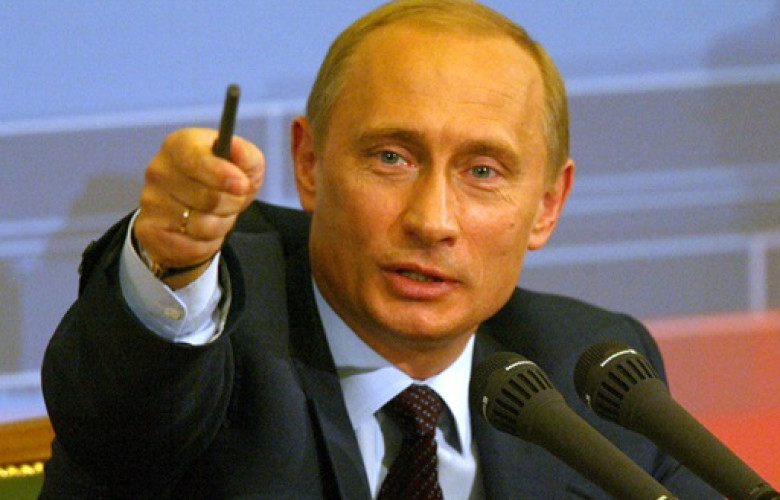To deal with Russia, first understand what Putin wants
Ian Hill
2025-01-31
AMERICA
GEOPOLITICS
This article first appeared on The Strategist, published by the Australian Strategic Policy Institute

But it’s far from clear whether this is achievable, not least because the war in Ukraine has become a proxy for Putin’s wider confrontation with the West.
Trump’s campaign pledge that he would end the fighting within 24 hours has already been modified, with the new president and his advisers more recently discussing a period of three to six months. Trump has signalled plans for an early meeting with Vladimir Putin, while the United States’s special adviser to Ukraine is expected to visit Kyiv soon.
Putin will likely welcome a meeting with his US counterpart, not least because it will put him where he always wanted to be: talking directly to Washington, one great power to another, disposing of world affairs. This appeals to the Russian president’s concern for his, and Russia’s, appropriate standing in global affairs.
Moreover, Putin will likely fancy that he can play the incoming president, much as reports claim he did at their Helsinki summit in 2018. He will also consider himself to be in a strong position to drive a hard bargain on Ukraine.
He thinks he’s winning and that time is on his side. To some extent, he has a point.
Russia has the upper hand in what has become a brutal war of attrition. Russian forces have been making slow, costly yet inexorable progress, pushing the outmanned and outgunned Ukrainian defenders onto the backfoot. Meanwhile, relentless missile and drone attacks have taken a high toll on Ukrainian energy and civilian infrastructure.
Western countries are facing domestic political and economic pressures and distractions. Putin calculates that this, coupled with uncertainty over Trump’s approach to the US’s European allies, will lead the West to tire of supporting Kyiv and to welcome a deal.
To date, Putin has shown no real interest in a negotiated settlement—except on his own terms. These terms would effectively amount to capitulation by Kyiv and are by no means in the West’s interests.
Putin has not resiled from his core objective to bring Ukraine to heel, install a more pliable government in Kyiv, and draw Ukraine back firmly within Russia’s sphere of influence.
He won’t therefore be satisfied with just a ceasefire. Rather, he’ll want recognition of Russia’s annexed territories and a pledge of permanent Ukrainian neutrality and disarmament.
This relates to Putin’s wider objectives. As the war has continued, he has increasingly described Ukraine as a proxy for what he portrays as a wider existential conflict between Russia and the West. Resisting purported Western hostility towards Russia is now crucial in legitimising Putin’s continued rule.
Putin also wants to revise the post-Cold War security settlement in Europe and restore Russia’s global standing and influence. This was the essence of treaties that Moscow proposed in December 2021 on the eve of its invasion of Ukraine.
How the Trump administration deals with Moscow will be crucial not only for Ukraine’s future, but also for wider European and global security.
A quick, partial deal now would eventually come back to bite the US and its European allies.
If Trump wants a quick deal, he will press Ukraine to accept a ceasefire along the current lines of fighting. Kyiv may indeed have to accept a loss of territory as part of a settlement. But unless this is accompanied by robust Western (above all, US) security guarantees, such an agreement is unlikely to last, giving Russia the opportunity to rebuild its forces. Once it senses that Western attention has shifted elsewhere, Moscow will be emboldened to resume its subjugation of Ukraine.
The smarter approach for Washington would instead be to try and even up the scales by intensifying pressure on Putin to nudge him into negotiations while strengthening Ukraine’s hand ahead of any talks.
For example, Putin is keen to secure a relaxation of Western economic and technology sanctions so the Russian economy can recover and Moscow can reduce its stark dependence on China. Western states should give no such relief. Sanctions should instead be stepped up to increase pressure on the already-weakened Russian economy.
Washington should also pledge to increase military and economic support for Kyiv, signalling to Putin that he’s unlikely to achieve his aims in eastern Ukraine.
These measures would push Moscow to agree to talks to end the fighting and would strengthen Kyiv’s hand (and that of its Western backers) ahead of any such negotiations.
Early signals from the new administration are encouraging. Trump has urged Putin to agree to end the fighting in Ukraine, threatening otherwise to increase pressure substantially on Moscow, including through expanded sanctions.
Even so, securing a long-term, durable settlement in Ukraine involves more than this. It will also require Washington and its European allies to face up squarely to Moscow’s more confrontational and expansive ambitions.
The question is whether the new US administration will do this.
Membership
NZIIA membership is open to anyone interested in understanding the importance of global affairs to the political and economic well-being of New Zealand.